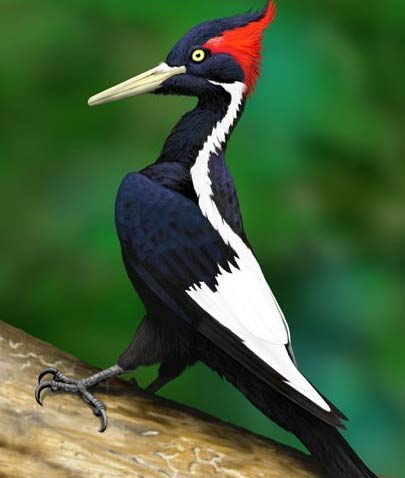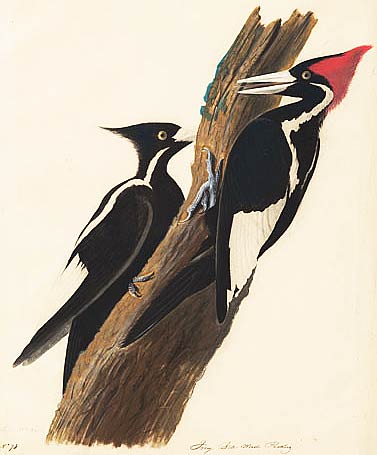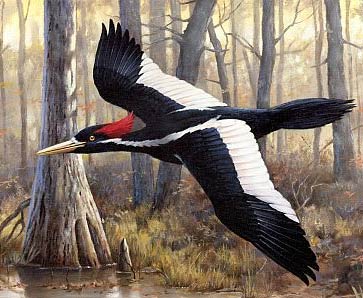Ivory-billed Woodpecker – Elusive, Extinct or Endangered Bird

The Ivory-billed woodpecker is thought to be extinct. There have been a couple of sightings over the last few years, but no scientific evidence has been found to confirm the existence of these birds. Since there is no conclusive proof, the Ivory-billed woodpecker is on the ICUN’s critically-endangered list.
The Largest of its kind
The Ivory-billed woodpecker is the largest of the woodpeckers, with a height of 20 inches (50cm) and a wingspan of 30 inches (75cm). Its most distinguishing feature, is its large ivory-colored bill. The bird is similar in looks and size, to the Cuban Ivory-billed woodpecker.

The Cuban woodpecker, in turn, is related to the Imperial woodpecker, which is also thought to be extinct. The male Ivory-billed woodpecker has very distinct plumage: it is red with a black streak running up the front. The large bill and the markings on the wings, make it distinctly different from the more common Pileated woodpecker.
Habitat Destruction
The main reason that the Ivory-billed is so rare, is due to habitat destruction. Historically, the bird only lived in the ancient forests in southern United States. These areas had hardwood trees, which the woodpecker preferred. During the American Civil War, most of these forests were leveled and the natural habitat destroyed for the bird.

Besides habitat destruction, there is another factor that makes it incredibly difficult to find living specimens: the birds live in pairs and have a massive territory of 10 square miles (25km²). They need a big area to claim as their own, because they feed mainly on the larvae of wood beetles.
Nesting Habits
Ivory-billed woodpeckers use dead or dying trees to make their nests in. they will build a nest fairly high up, between 8m (26 feet) and 15m (50 feet) from the ground. Five eggs are laid and they take around five weeks to incubate.
Both mates incubate the eggs and look after the young, but the male is responsible for sitting on the eggs at night. The young birds learn to fly five weeks after hatching.
The woodpeckers have a distinct drumming sound, which is the result of them repeatedly hammering into tree trunks to access the larvae inside. In the 1930’s the Ivory-billed woodpecker’s kent, or call, was recorded. It sounds very much like a toy trumpet and the pitch rises, the more agitated the bird becomes.
